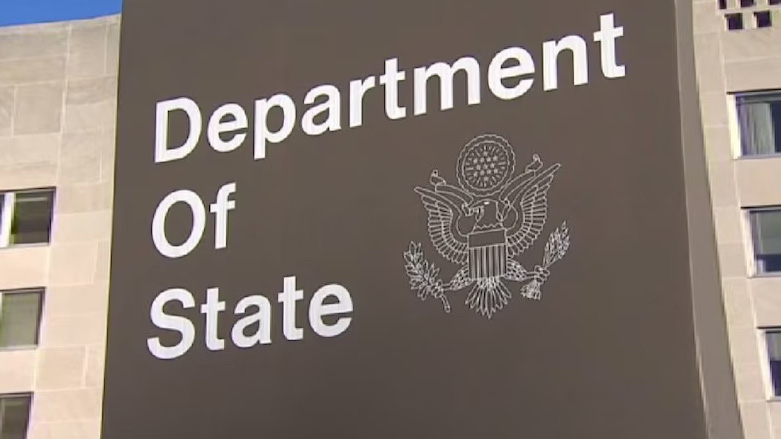U.S. condemns Iran missile strikes on Erbil; underscores need for Kurdish air defense, as 2024 NDAA stipulates

WASHINGTON DC, United States (Kurdistan 24) –The Biden administration was quick to condemn on Monday—in quite strong terms—Iran’s ballistic missiles strikes on the Kurdistan Region. This was so although Monday was a federal holiday.
The U.S. Congress included a provision for air defense for Peshmerga forces in the 2024 defense budget, formally known as the NDAA, or National Defense Authorization Act.
“Not later than February 1, 2024, the Secretary of Defense, in consultation with the Secretary of State, shall develop a plan of action to equip and train Iraqi security forces and Kurdish Peshmerga forces to defend against attack by missiles, rockets, and unmanned systems,” the NDAA states.
While it remains to be seen what effect this attack will have on the implementation of Congress’s direction, it would seem to provide strong impetus to do so as quickly as possible.
State Department and White House Condemnations
The U.S. condemnation of the Iranian attack came from both the State Department and the White House, although the former was the more formal.
“The United States strongly condemns Iran’s attacks in Erbil today and offers condolences to the families of those who were killed,” State Department Spokesperson Matthew Miller said in a statement posted to the department’s website and emailed to journalists.
“We oppose Iran’s reckless missile strikes,” Miller continued, as he affirmed, “We support the Government of Iraq and the Kurdistan Regional Government’s efforts to meet the aspirations of the Iraqi people.”
The White House earlier, upon request, emailed journalists a statement from National Security Council Spokesperson Adrienne Watson.
Watson explained that the U.S. had “tracked the missiles, which impacted in northern Iraq and northern Syria.”
Of course, if the missiles could be tracked, they could also have been shot down—if the right equipment had been in place.
“We have been in touch with senior Iraqi officials, as well as officials in the Kurdistan Region,” Watson continued, and “initial indications are that this was a reckless and imprecise set of strikes.”
The Iranian Attacks
The attack in the Kurdistan Region occurred just before midnight, local time, as Iran launched a barrage of ballistic missiles at Erbil. Three of the missiles struck the house of a prominent Kurdish businessman, Peshraw Dizayee, killing Dizayee and his family.
Read More: Four civilians killed in missile attack on Erbil
Iran claimed that it had targeted the “espionage headquarters” of Israeli intelligence, where, it charged, “terrorist” acts against Iran were planned.
That charge was strongly denied by the Kurdistan Regional Security Council, which noted that the Iranians had claimed “the attack targeted several sites of Iranian opposition groups.” But, “unfortunately,” KRSC statement continued, “they always use baseless excuses to attack Erbil.”
Tehran also said that it had attacked an ISIS site in Syria, retaliation for a recent ISIS terrorist attack in the Iranian city of Kerman that killed 95 people.
The Iranian attack in Syria, it has now emerged, targeted a prison maintained by the Kurdish-led Syrian Democratic Forces (SDF), America’s main local partner in the fight against ISIS in Syria.
The al-Sina’a prison, in Hasakah, houses captured ISIS fighters. In Jan. 2022, ISIS launched a surprisingly ferocious attack on the prison in an effort to free those fighters. That led to a week of bitter fighting between ISIS and the SDF,
Siyamand Walat, who commanded the Kurdish forces in that battle, gave a rare interview to the media, once ISIS had been defeated. Welat made a surprising charge. He blamed Syria, at least in part, for having supported ISIS in its assault on the prison, part of an effort to undermine the U.S. position in the region.
Read More: Understanding the Hasakah prison siege: how brutal parties use force, violence (Part I)
The Iranian ballistic missile attack on al-Sina’a prison could have led to the deaths of SDF personnel who maintain the facility. It also could have led to the escape of ISIS prisoners. But, it seems, neither happened–although there was a serious effort among the ISIS prisoners to escape.
“Following the attack, dozens of ISIS detainees attempted to escape from the prison,” the SDF media center said in a statement released on Tuesday.
“However, the security measures implemented by our SDF forces and internal security have foiled the attempted escape,” it added.
Read More: Missile attack targets Syrian prison holding ISIS prisoners: SDF
